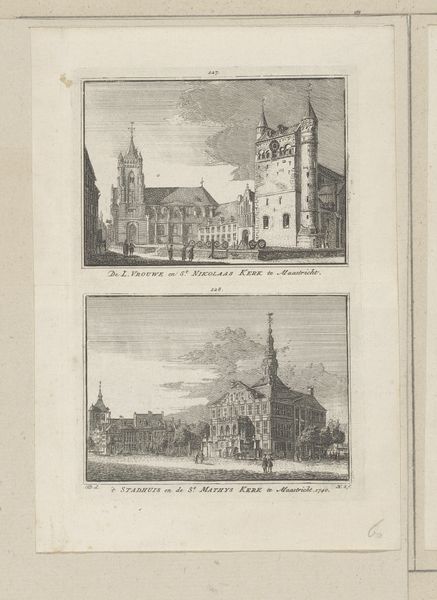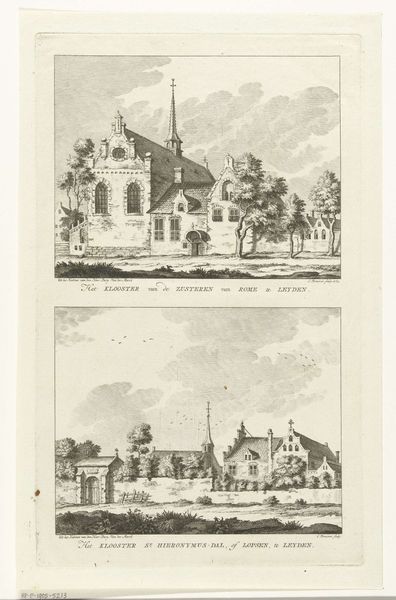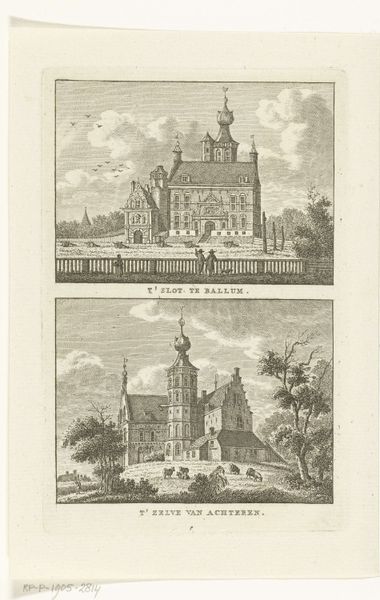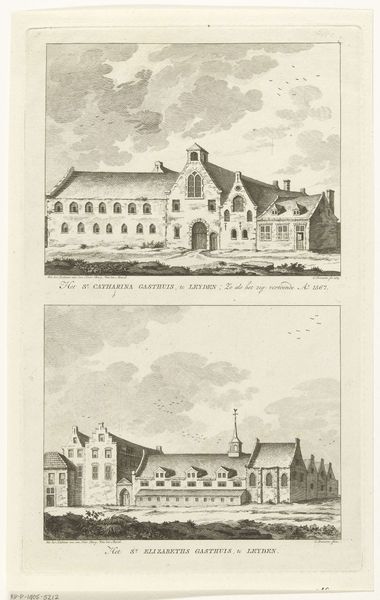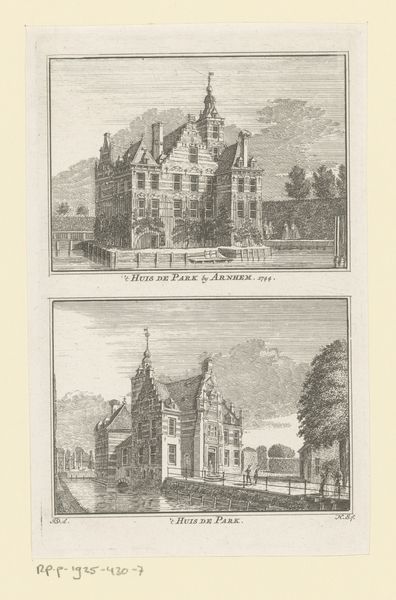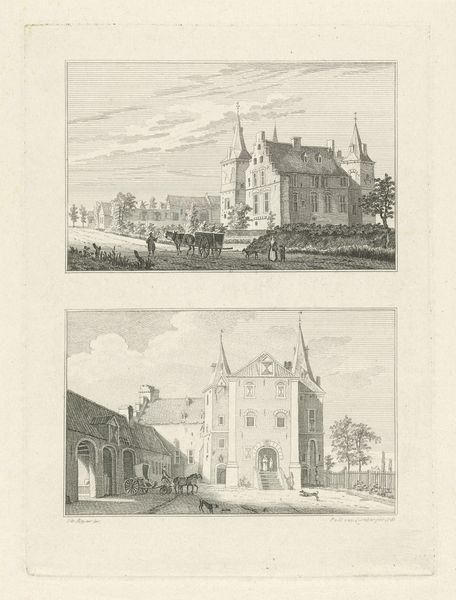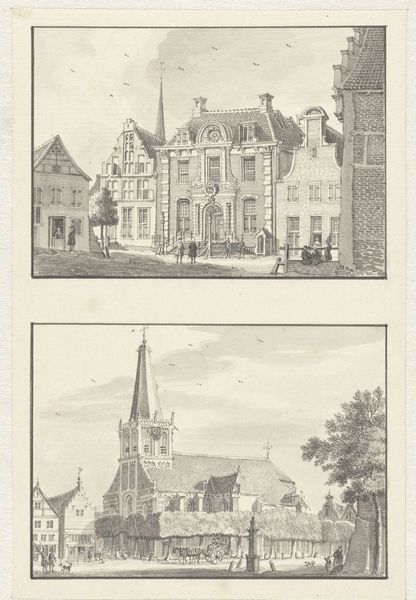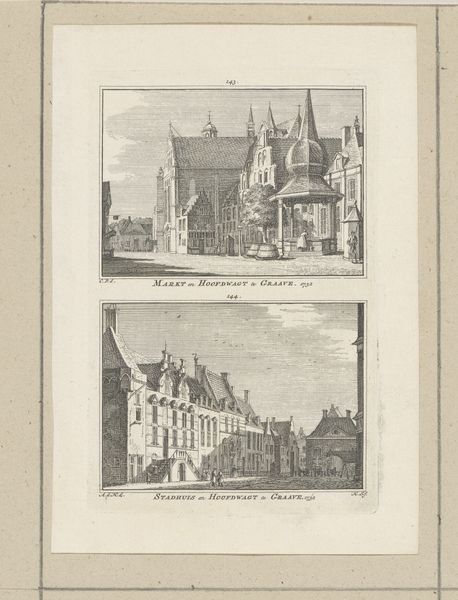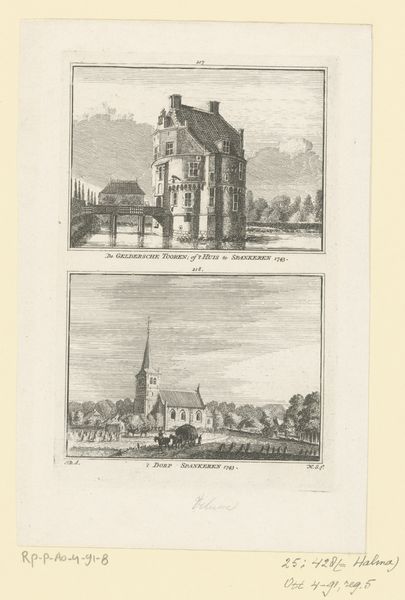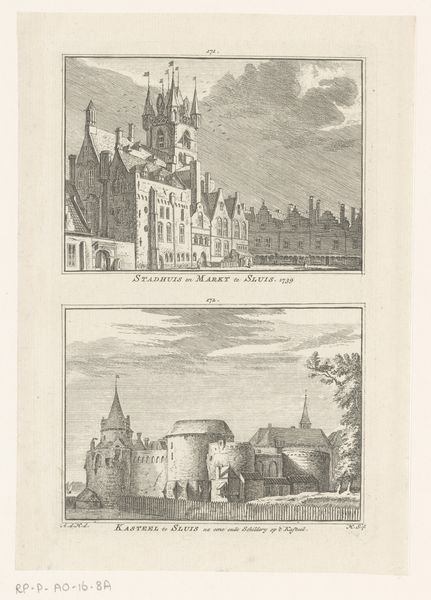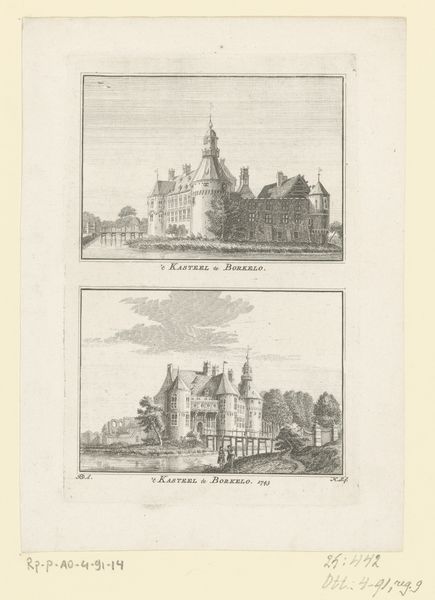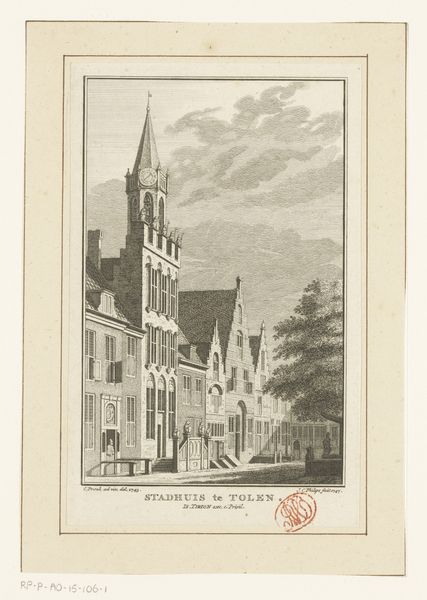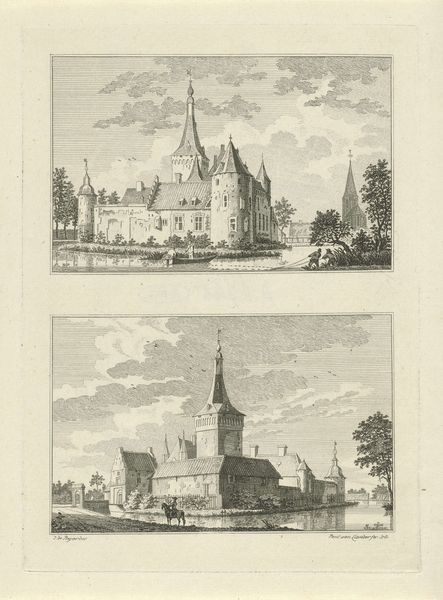
Twee gezichten op kloosters te Leiden: Jacobsgasthuis en Barbaragasthuis 1783
0:00
0:00
cornelisbrouwer
Rijksmuseum
print, engraving, architecture
#
dutch-golden-age
# print
#
old engraving style
#
cityscape
#
engraving
#
architecture
Dimensions: height 309 mm, width 189 mm
Copyright: Rijks Museum: Open Domain
Editor: This print, created by Cornelis Brouwer in 1783, titled "Two Views of Monasteries in Leiden: Jacobsgasthuis and Barbaragasthuis", showcases both structures with intricate detail. The lines of the architecture are crisp and clean. How do we interpret the artist’s intent in immortalizing these buildings through an engraving? Curator: I find it interesting to consider Brouwer's choice of subject. By the late 18th century, institutions like these ‘gasthuizen’ or hospices, originally charitable and religious in nature, were increasingly viewed as public entities, intertwined with social welfare. Think about the emerging discourse on poverty, public health, and the role of the state. Editor: So, Brouwer isn’t simply recording the architecture? Curator: Exactly. He's participating in a broader discussion. These aren’t just buildings; they are representations of shifting social responsibilities. The clean, almost idealized depiction suggests an aspiration, perhaps, for order and civic pride. How might this image have been perceived by different social classes at the time? Editor: The rising middle class might see it as an affirmation of civic responsibility? Curator: Precisely. While the impoverished may see it as an unfulfilled promise. The visual language of order masks complex social realities. Brouwer presents not only the "what" of the buildings but also the "why" they mattered in the socio-political landscape. Editor: It’s fascinating how a seemingly straightforward cityscape print engages with these complex social themes! I will now view old prints with new lenses! Curator: Exactly. Art is often a reflection, and sometimes a driver, of social change.
Comments
No comments
Be the first to comment and join the conversation on the ultimate creative platform.
